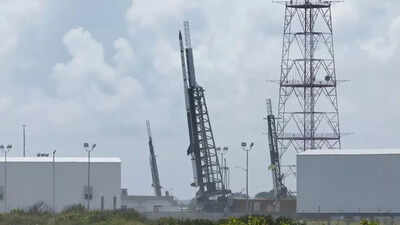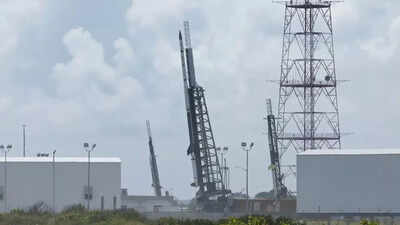NASA to launch TOMEX+ mission from Wallops Island, could paint East Coast skies with colourful vapour trails |

NASA is set to launch three sounding rockets as part of the TOMEX+ mission from its Wallops Flight Facility on Wallops Island, Virginia, late Monday, 26 August 2025. Residents across parts of the mid-Atlantic, including New Jersey, Delaware, Pennsylvania, Virginia, and North Carolina, may be able to see colourful vapour trails released shortly after liftoff. The launch window opens at 10 p.m. ET and extends until 3 a.m. ET. The mission aims to study the mesopause, the coldest part of Earth’s atmosphere, which plays a key role in transferring energy from lower layers upward, affecting weather and satellite operations.
NASA’s TOMEX+ mission: studying the upper atmosphere with sounding rockets
NASA’s TOMEX+ mission, short for Turbulent Oxygen Mixing Experiment Plus, is designed to explore a mysterious and hard-to-reach layer of the atmosphere called the mesopause, located roughly 53 to 65 miles above Earth. This layer is too high for weather balloons and too low for satellites, so rockets are needed to collect data. The first two rockets will launch almost simultaneously, releasing colourful vapour tracers made of barium, lithium, and aluminium compounds—similar to materials in fireworks—allowing scientists to track the motion of the air visually. A third rocket, equipped with a laser, will measure how these tracers twist and turn, helping researchers understand how energy moves through this cold, turbulent part of the atmosphere.
Why the mission matters and safety measures
The mesopause is a “mixing ground” where energy from lower atmospheric layers rises into space, creating turbulence that can affect satellites. By tracking the vapour tracers, scientists can learn more about how this turbulence forms and improve predictions for satellite paths and weather patterns. NASA assured that the small amounts of vapour used are safe for humans and wildlife. Previous launch attempts were delayed due to Hurricane Erin, which created rough seas in the recovery zone, but conditions are now expected to be favourable for Monday night’s mission.




